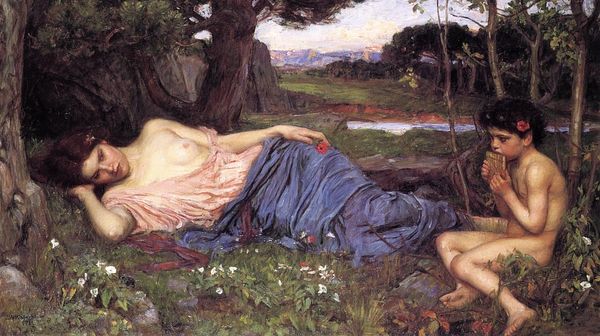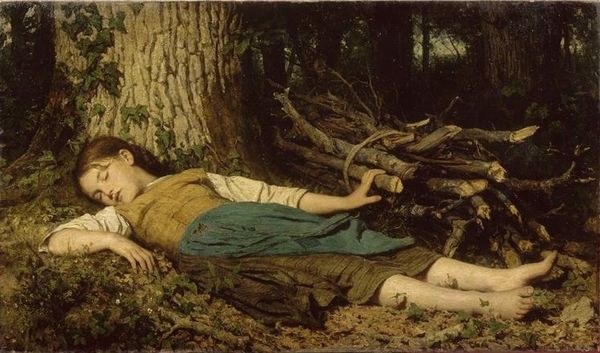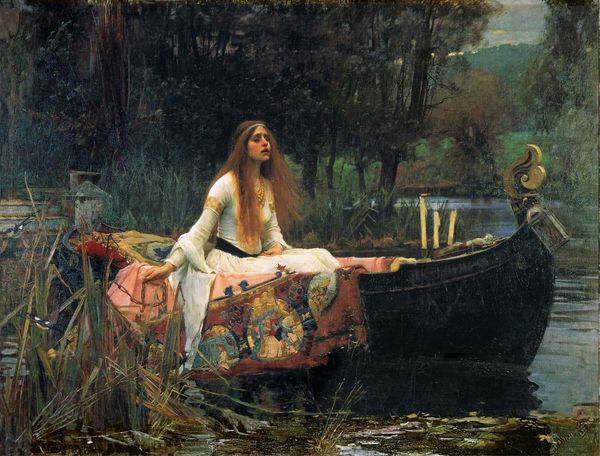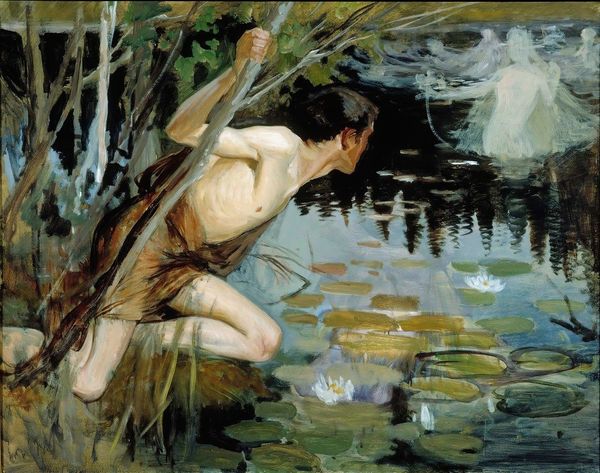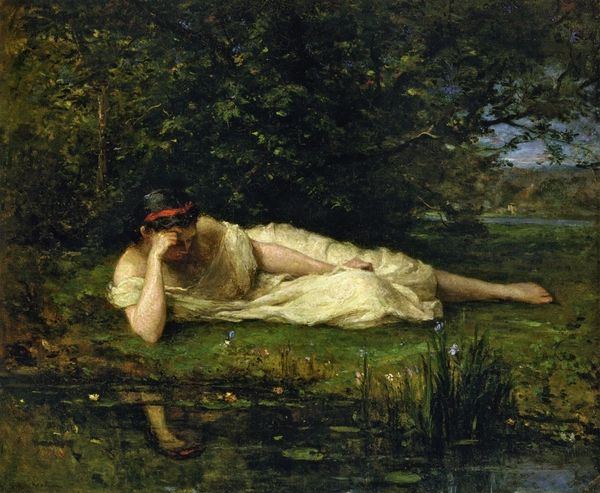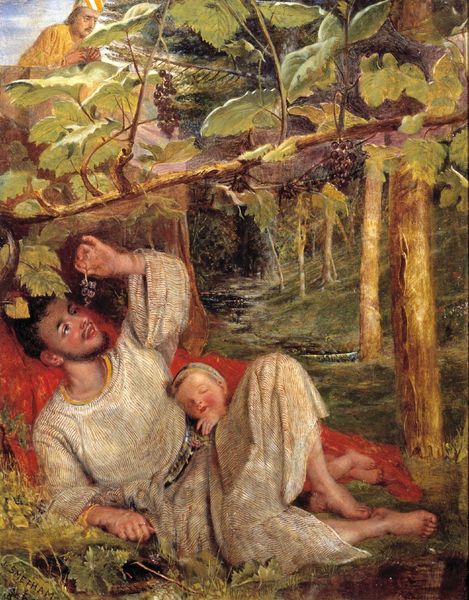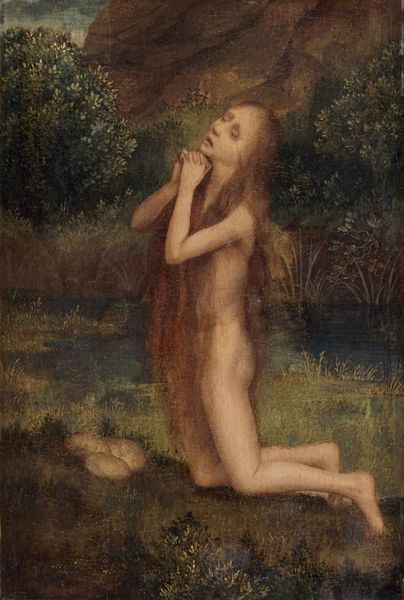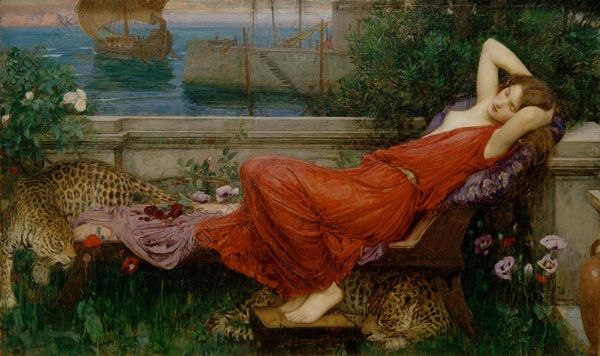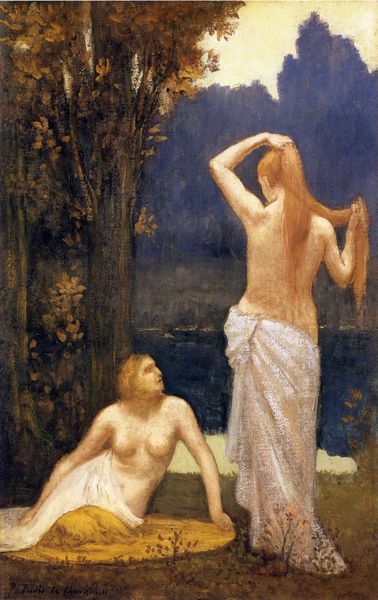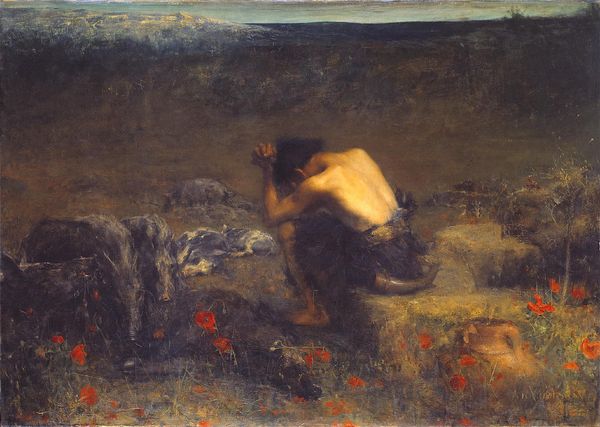
#
tree
#
impressionistic
#
fantasy art
#
fantasy illustration
#
possibly oil pastel
#
roman-mythology
#
neo expressionist
#
forest
#
underpainting
#
surrealism
#
mythology
#
human
#
abstract character
#
surrealist
#
unfinished
Dimensions: 127 x 66 cm
Copyright: Public domain
Curator: There’s a palpable tension in this work; the stillness is deceptive. Editor: You're right. We’re looking at John William Waterhouse's "The Naiad," painted in 1893. Immediately striking is the contrast in tone; almost voyeuristic, and yet mournful. Curator: Absolutely. Waterhouse taps into a rich vein of symbolic imagery here. Naiads, in classical mythology, are nymphs of springs and fountains. But they're more than just pretty water sprites; they embody the life force of the water itself. Water, life. And death it seems, given the body lying there. Editor: Contextualizing this in the late 19th century, the male figure prostrate hints at themes of conquest and the feminine mystique gaining more attention, the male as victim. Consider the shift of women in the domestic sphere. Is Waterhouse suggesting some form of environmental consciousness? Curator: Perhaps indirectly. I think Waterhouse is more interested in the inherent mystery of the classical world, viewed through a Victorian lens. Observe how he uses light. It is dappled and creates a sense of being immersed within the scene, mirroring her realm and how connected it is to the woodland's mood. There is a constant motif in Waterhouse's work of the woman as something removed from this sphere. Editor: I would offer an alternate understanding. If Waterhouse seeks the exotic then we have to ask: For whom? During this period, anxieties surrounding class and gender were pervasive. By depicting the Naiad, this otherworldly entity is set up against the modern man as both separate and, literally, above. Curator: But is she “above”? Isn’t there also a hint of vulnerability? She is peering around a tree, almost startled and seems unsure, she could equally represent fragility and be an emblem of nature's precarity in an industrialising age. Editor: I agree there’s fragility, and that the anxiety of modernity surfaces powerfully, but, in some ways, these figures appear as reflections of broader themes circulating throughout the later 19th century and beyond. It's unsettling and captivating. Curator: Indeed. Waterhouse’s work really rewards close and continued looking. Editor: Definitely something to contemplate long after one leaves the gallery.
Comments
No comments
Be the first to comment and join the conversation on the ultimate creative platform.
